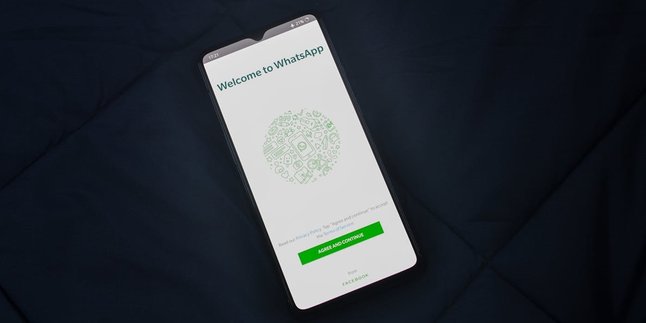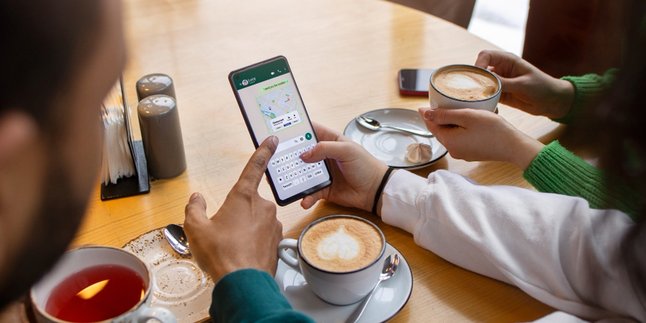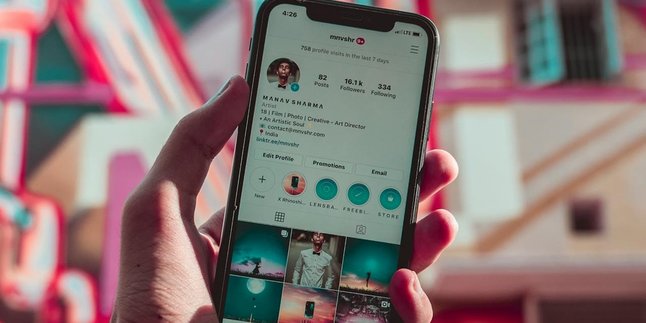Kapanlagi.com - Want to know how to see hidden last seen on WhatsApp? The privacy feature of WhatsApp allows users to hide their "last seen" status. However, there are some tricks you can try to still find out.
Some people hide their online activity for various reasons. Nevertheless, you can still look for ways to see hidden last seen on WhatsApp without needing additional apps. This article will help you understand the steps easily.
1. Understanding the "Last Seen" Feature in WhatsApp
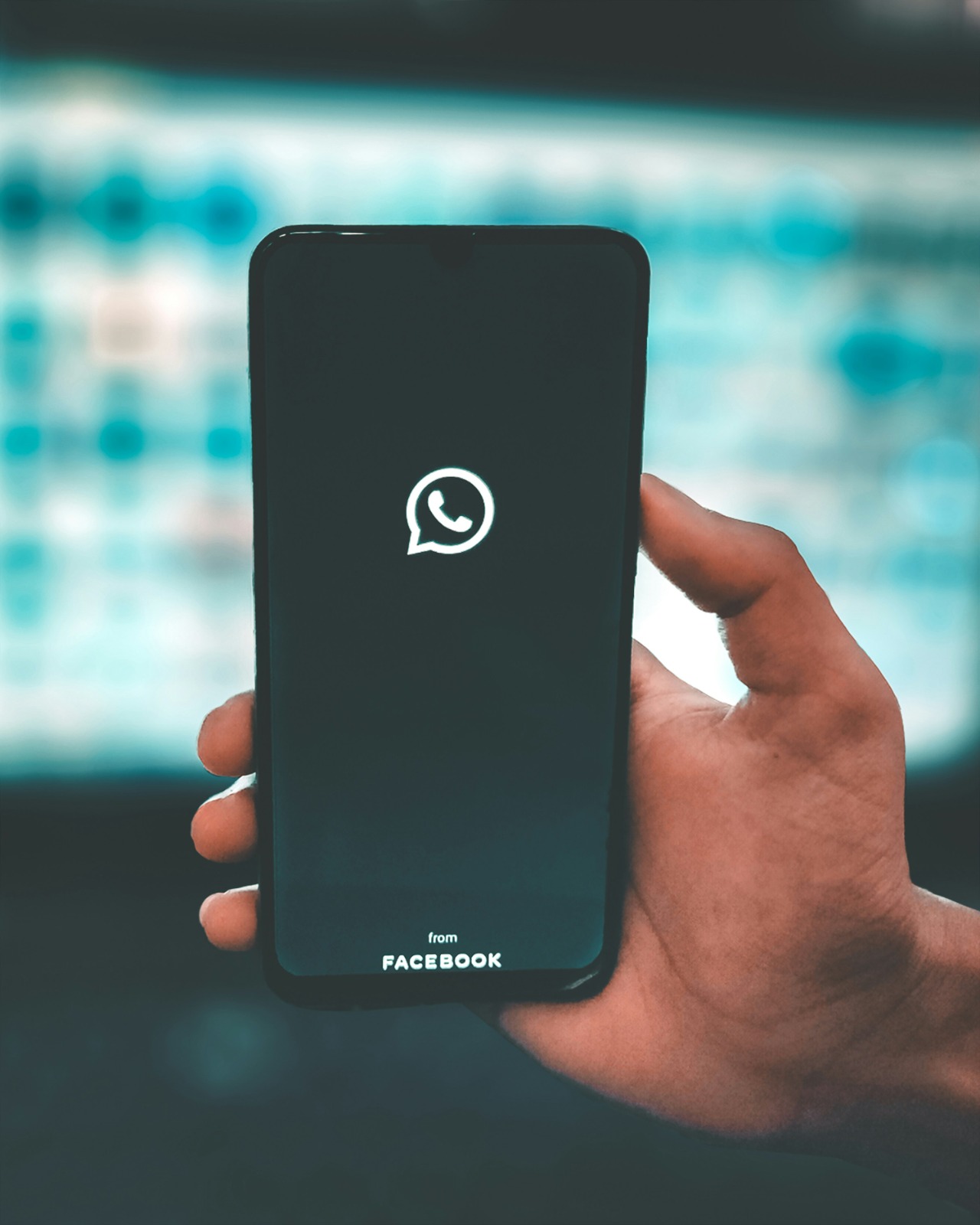
The initial display when the WhatsApp application is opened (credit: unsplash)
The “Last Seen” feature on WhatsApp is one of the important elements of this instant messaging application. This feature displays information about when someone last accessed or opened the WhatsApp application. By default, this information can be seen by all of the user's contacts, but WhatsApp also provides an option to hide it.
The main function of this feature is to provide an overview of someone's activity on the WhatsApp platform. For example, if you see the status “Last seen today at 10:30,” it means that the contact last opened or used WhatsApp at the indicated time. This information can be useful in various situations, such as knowing whether someone may have read your message or when the right time is to contact them.
It is important to understand that “Last Seen” does not always mean that someone has read your message. It only indicates when they last opened the WhatsApp application. Someone could open the app without reading a specific message or just to check notifications briefly.
WhatsApp has designed this feature with privacy aspects in mind. Users are given full control over who can see their "Last Seen" status. The available options typically include:
- Everyone: Status can be seen by anyone who has your WhatsApp number.
- My Contacts: Only contacts saved on your phone can see the status.
- My Contacts Except...: Allows you to select specific contacts who cannot see your status.
- No One: No one can see your "Last Seen" status.
Keep in mind that when you choose to hide your "Last Seen" status, you also will not be able to see others' statuses. This is WhatsApp's way of maintaining balance and preventing abuse of this feature.
In the context of modern digital communication, the "Last Seen" feature becomes a kind of social indicator. However, its interpretation can be very subjective and sometimes lead to misunderstandings. For example, someone might feel ignored if they see that their message has been read (blue ticks) but not replied to, while the message recipient might be busy or have other reasons for not responding immediately.
By understanding the function and implications of the "Last Seen" feature, WhatsApp users can make more informed decisions about how they want to manage their privacy on this platform. Whether choosing to let their status be visible to everyone or hiding it for privacy reasons, each choice has its own consequences in the context of digital social interactions.
2. Reasons People Hide Their "Last Seen" Status
Hiding the "Last Seen" status on WhatsApp has become an increasingly popular choice among users. There are various reasons why someone might decide to enable this feature. Let's explore some of the main motivations behind this decision:
1. Personal Privacy
Many people feel that information about when they are online or using the app is personal. They may not want others to know their WhatsApp usage patterns, especially if they are often online at certain times.
2. Avoiding Social Pressure
When the "Last Seen" status is visible, some people may feel burdened by the expectation to respond to messages immediately. By hiding this status, they can reduce the pressure to always be "on call" and respond right away.
3. Time Management
For those who want to focus more on work or other activities, hiding the online status can help reduce distractions. This allows them to use WhatsApp without feeling monitored or disturbed by constant notifications.
4. Security
In some cases, people may feel that displaying their online status could pose a security risk. For example, if someone is traveling and does not want others to know when they are active online.
5. Avoiding Conflicts
Sometimes, the online status can lead to misunderstandings in personal or professional relationships. For instance, someone may feel offended if they see you online but not responding to their messages, even though you might be busy with other things.
6. Communication Flexibility
By hiding their status, users have more flexibility in choosing when and how they want to communicate. They can check messages and respond at their convenience without feeling monitored.
7.Professionalism
In a professional context, some people may feel that displaying their online status all the time could be considered unprofessional, especially if they are using WhatsApp for business communication.
8.Avoiding Stalking
Unfortunately, there are cases where online status information is used to stalk or excessively monitor someone's activities. Hiding the status can help prevent such behavior.
9.Control over Personal Narrative
Some people feel that by hiding their online status, they have more control over how they are perceived by others in the digital space.
10.Work-Life Balance
In an era where the boundaries between work time and personal time are increasingly blurred, hiding online status can help enforce clearer boundaries between professional and personal life.
It is important to remember that the decision to hide the "Last Seen" status is a valid personal choice. Every individual has the right to manage their digital privacy according to their own comfort and needs. WhatsApp, as a platform, respects this by providing flexible privacy options.
However, it is also important to consider that hiding this status can have an impact on digital social interactions. Some people may find it difficult to know the right time to communicate or may misinterpret the unavailability of the status as a form of avoidance.
Ultimately, the decision to hide or display the "Last Seen" status should be based on a balance between personal privacy needs and the social dynamics within one's digital communication circle. A good understanding of the reasons behind this choice can help create more effective and respectful communication on the WhatsApp platform.
3. Methods to View Hidden "Last Seen" Status

The initial display when the WhatsApp application is opened (credit: unsplash)
Although WhatsApp has designed the "Last Seen" feature with user privacy in mind, there are some methods that are claimed to be able to see this status even when it is hidden. However, it is important to note that these methods are not always accurate, may violate the privacy of other users, and in some cases, may violate WhatsApp's terms of service. Here are some frequently discussed methods:
1. Using Third-Party Apps
There are various third-party apps that claim to be able to track the WhatsApp activity of other users, including the hidden "Last Seen" status. These apps typically work by monitoring changes in contact statuses periodically. However, using such apps carries a high risk as it can jeopardize the security of your WhatsApp account and violate the privacy of others.
2. Group Chat Method
Some people claim that by creating a WhatsApp group and adding the contacts they want to monitor, they can see when those contacts are online. The theory is that when someone is online, their "online" status will appear in the group even if they have hidden their "Last Seen" status. However, this method is not always accurate and can be considered a violation of privacy.
3.Using WhatsApp Web
Some users report that they can see the online status of contacts through WhatsApp Web, even when the "Last Seen" status is hidden in the mobile app. However, the effectiveness of this method varies and is not always consistent.
4.Leveraging Call Features
There is a theory that by attempting to make a WhatsApp call to a contact whose status is hidden, one can find out if they are online. If the call connects (even if not answered), this could indicate that the contact is active on WhatsApp.
5.Observing Changes in Profile Picture or Status
Some people try to estimate someone's activity on WhatsApp by observing changes in their profile picture or status. Although it does not provide accurate "Last Seen" information, it can give clues about when someone is actively using the app.
6.Using Online Services
There are several online services that claim to be able to track someone's WhatsApp activity. However, these services are highly unreliable and often are scams or malware that can potentially endanger the security of your device and personal data.
7.Alternative "Last Seen" Methods
Some users try to estimate the "Last Seen" time by observing when their messages are marked as "sent" (one check) to "delivered" (two checks). Although not accurate, this can provide a rough estimate of when someone might be active on WhatsApp.
8.Using the Broadcast Feature
There is a theory that by sending a broadcast message to the contacts you want to monitor, one can see when the message is received, which may indicate when that contact is online.
It is important to emphasize that most of these methods are not recommended for several reasons:
- Ethics: Trying to see information that someone has deliberately hidden can be considered a violation of privacy and ethics.
- Accuracy: Many of these methods are inaccurate and can provide misleading information.
- Security Risks: Using third-party apps or services can jeopardize the security of your WhatsApp account and personal data.
- Violation of Terms of Service: Some methods may violate WhatsApp's terms of service, which can result in account suspension.
Instead of trying to see hidden "Last Seen" status, a better approach is to respect others' privacy and focus on open and honest communication. If you have concerns about someone's availability or responsiveness, the best way is to discuss it directly with them.
4. Apps to View Hidden "Last Seen" Status
Although there are various applications that claim to help view the hidden "Last Seen" status on WhatsApp, it is important to remember that using such applications carries serious risks and is generally not recommended. However, for informational purposes, here are some applications that are often mentioned in this context, along with explanations of how they work and the associated risks:
1. WhatsLog
WhatsLog is one of the most frequently mentioned applications for this purpose. This application claims to be able to track the WhatsApp activity of specific contacts, including their online and offline status.
How It Works:
- Users are asked to enter the WhatsApp number they want to track.
- The application then attempts to monitor the activity of that number and provides notifications when the contact is online or offline.
Risks:
- Data security: This application requires access to your contact information, which can be risky if misused.
- Accuracy: There is no guarantee that the information provided is accurate.
- Privacy violation: Using applications like this can be considered a violation of someone else's privacy.
2. WhatsClock
WhatsClock is another application that claims to track the online status of WhatsApp contacts.
How It Works:
- Users add the WhatsApp number they want to monitor.
- The application attempts to provide reports on the online time of that contact.
Risks:
- Reliability: The information provided may not always be accurate or up-to-date.
- Security: Providing contact information to third-party applications can be risky.
3. OnLog
OnLog is an application that claims to provide notifications when certain contacts are online on WhatsApp.
How It Works:
- Users enter the WhatsApp number they want to monitor.
- The application attempts to detect when that number is online and sends notifications.
Risks:
- Privacy: Using this application can be considered a form of digital stalking.
- Legality: It may violate WhatsApp's terms of service.
4. W-Track
W-Track is another application that claims to track the WhatsApp activity of specific contacts.
How It Works:
- Users add the number they want to track.
- The application attempts to provide information about the online and offline time of that contact.
Risks:
- Account security: Using third-party applications can jeopardize the security of your WhatsApp account.
- Data accuracy: There is no guarantee that the data provided is accurate.
5. Wossip
Wossip is an application that claims to be able to monitor the WhatsApp activity of multiple contacts at once.
How It Works:
- Users enter several WhatsApp numbers to be monitored.
- The application attempts to provide reports on the online activity of those contacts.
Risks:
- Mass privacy violation: Monitoring many contacts at once can be considered a serious invasion of privacy.
- Data security: Risk of data leaks if the application is not secure.
It is important to emphasize that the use of such applications is highly discouraged for several reasons:
- Ethics: Trying to see information that others intentionally hide is a violation of ethics and privacy.
- Security: These third-party applications can jeopardize the security of your WhatsApp account and personal data.
- Legality: The use of such applications may violate WhatsApp's terms of service and could result in account suspension.
- Accuracy: There is no guarantee that the information provided by these applications is accurate.
- Psychological Impact: Obsessively monitoring someone else's activity can negatively affect mental health and interpersonal relationships.
Instead of using these applications, a healthier and more ethical approach is to respect others' privacy and focus on open and honest communication. If you have concerns about communication with someone, the best way is to discuss it directly with them.
5. Risks and Ethical Considerations
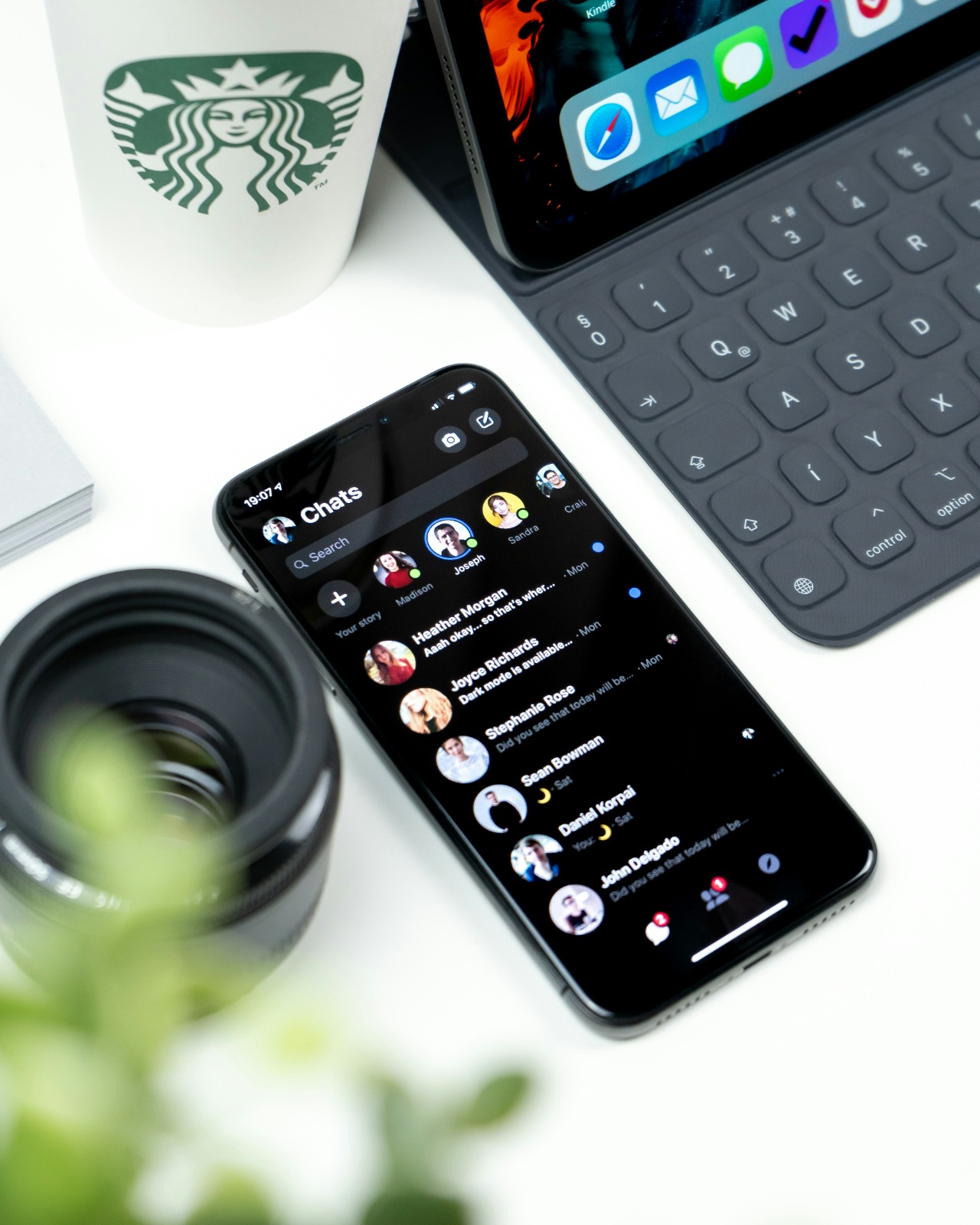
WhatsApp inbox display (credit: unsplash)
Efforts to see the "Last Seen" status on WhatsApp that is hidden carry a number of serious risks and ethical considerations that need to be taken into account. Below is an in-depth explanation of various aspects that should be considered:
1. Privacy Violation
Attempting to access information that someone has intentionally hidden is a clear violation of privacy. Every individual has the right to determine what information they wish to share and what they want to keep private. Respecting these choices is an important part of digital ethics and healthy interpersonal relationships.
2. Data Security Risks
Using third-party applications or unofficial methods to access WhatsApp information can jeopardize your data security. These applications often request access to sensitive information on your device, which can be misused for data theft or other harmful activities.
3. Violation of Terms of Service
WhatsApp has clear terms of service that prohibit the use of applications or methods that disrupt or manipulate their services. Violating these terms can result in account blocking or other legal consequences.
4. Inaccuracy of Information
Methods and applications that claim to view hidden statuses are often inaccurate. Relying on this unreliable information can lead to misunderstandings and poor decision-making.
5. Psychological Impact
Obsession with monitoring others' online activities can negatively affect mental health. This can lead to anxiety, paranoia, and unhealthy stalking behavior.
6. Erosion of Trust
If caught using such methods or applications, trust in your relationships can be severely damaged. This can have long-term consequences on your personal and professional relationships.
7. Malware Risks
Many applications that claim to track WhatsApp activity are actually malware designed to steal data or damage your device.
8. Legal Implications
In some jurisdictions, attempts to access someone's personal information without permission can be considered illegal and may lead to legal action.
9. Technology Dependence
Relying on technology to monitor others can create an unhealthy dependency and disrupt the ability to build relationships based on communication and trust.
10. Digital Ethical Violations
In the digital age, it is important to uphold ethics in online interactions. Respecting others' privacy is an integral part of responsible digital ethics.
Ethical Considerations:
- Respect for Autonomy: Every individual has the right to control their personal information. Respecting this choice is part of valuing someone's autonomy.
- Principle of Fairness: How would it feel if someone tried to access your personal information without permission? The principle of justice requires us to treat others as we would like to be treated.
- Integrity of Communication: Healthy communication is based on honesty and openness, not on covert surveillance.
- Digital Responsibility: As users of technology, we have a responsibility to use it ethically and not to harm others.
Ethical Alternatives:
- Direct Communication: If you have concerns about communicating with someone, the best way is to discuss it openly.
- Respecting Boundaries: Understanding and respecting the boundaries set by others in digital communication is key to healthy relationships.
- Focus on Yourself: Instead of trying to control or monitor others, focus on your own self-development and healthy communication from your side.
- Digital Education: Increasing understanding of digital ethics and online privacy can help create a safer and more respectful digital environment.
In conclusion, while technology may give us the ability to access hidden information, the ethical question is whether we should do so. Respecting others' privacy, upholding digital ethics, and focusing on healthy communication is a far better and sustainable approach in our digital interactions.
6. More Ethical Alternatives
Instead of trying to see the hidden WhatsApp "Last Seen" status, there are several more ethical and constructive alternatives you can consider. These approaches not only respect others' privacy but can also help build healthier relationships and more effective communication. Here are some alternatives you can implement:
1. Open and Honest Communication
If you have concerns about communication with someone, the best way is to discuss it directly. This can include:
- Expressing your feelings about the current communication patterns.
- Asking about their communication preferences (e.g., expected response times).
- Setting mutual expectations about how and when to communicate.
2. Respecting Boundaries
Everyone has the right to set boundaries in their digital communication. Respecting these boundaries includes:
- Understanding that not everyone is always available or wants to respond immediately.
- Valuing someone's decision to hide their online status.
- Not forcing communication when someone is clearly unavailable or not responding.
3. Focus on Self-Development
Instead of trying to control or monitor the activities of others, focusing on self-development can be a much more productive alternative:
- Improving your own communication skills.
- Developing new hobbies or interests that can distract from anxiety about others' responses.
- Working on personal projects that can enhance self-confidence and independence.
4.Setting Realistic Expectations
It is important to have realistic expectations about digital communication:
- Understanding that people have lives outside of the digital world and may not always be available.
- Realizing that instant responses are not the norm and are not indicators of the value of a relationship.
- Acknowledging that communication patterns can vary depending on the situation and context.
5.Using WhatsApp Features Ethically
WhatsApp provides several features that can help communication without violating privacy:
- Using the status feature to inform others about your availability.
- Utilizing the broadcast message feature for mass communication without infringing on individual privacy.
- Using the "reply later" feature to mark important messages that need a response when you have time.
6.Increasing Digital Awareness
Educating yourself about digital ethics and online privacy can help you become a more responsible technology user:
- Learning about the importance of digital privacy and how to protect it.
- Understanding the implications of various privacy settings on social media platforms.
- Staying updated on the latest developments in online security and best practices in digital communication.
7.Building Trust Through Consistency
Instead of relying on online status, focus on building trust through consistent behavior:
- Always keeping promises to respond or make calls at the agreed time.
- Giving full attention when communicating, rather than just responding superficially.
- Demonstrating reliability in communication, even if it means responding more slowly but with better quality.
8.Developing Offline Activities
Being too focused on online communication can lead to unhealthy dependency. Developing offline activities can help:
- Finding hobbies or activities that do not involve technology.
- Arranging face-to-face meetings with friends and family when possible.
- Practicing mindfulness or meditation to reduce anxiety related to digital communication.
9. Implementing “Digital Detox”
Occasionally doing a “digital detox” can help refresh your perspective on online communication:
- Setting specific periods during which you do not use social media or instant messaging apps.
- Using this time for self-reflection and evaluating your communication patterns.
- Finding a healthy balance between digital connectivity and offline life.
10.Using Time Management Tools
Instead of trying to monitor other people's activities, focus on effectively managing your own time:
- Using time management apps to organize your communication schedule.
- Setting specific times to check and respond to messages, so it does not disrupt productivity.
- Using the “do not disturb” feature on your devices to reduce distractions.
11.Building a Support Network
If you feel anxious about digital communication, building a support network can help:
- Talking to friends or family about your concerns.
- Joining online groups or forums that discuss healthy technology use.
- If necessary, consulting with a mental health professional about anxiety related to digital communication.
12.Developing Digital Empathy Skills
Enhancing empathy in digital communication can help reduce the urge to monitor others' activities:
- Trying to understand why someone may not respond immediately.
- Practicing patience and understanding in digital interactions.
- Recognizing that everyone has different communication rhythms and preferences.
By implementing these alternatives, you not only respect others' privacy but also develop a healthier and more ethical approach to digital communication. Focusing on building relationships based on trust, understanding, and mutual respect will be far more beneficial than trying to access information that is intentionally hidden.
7. How to Set "Last Seen" Privacy in WhatsApp
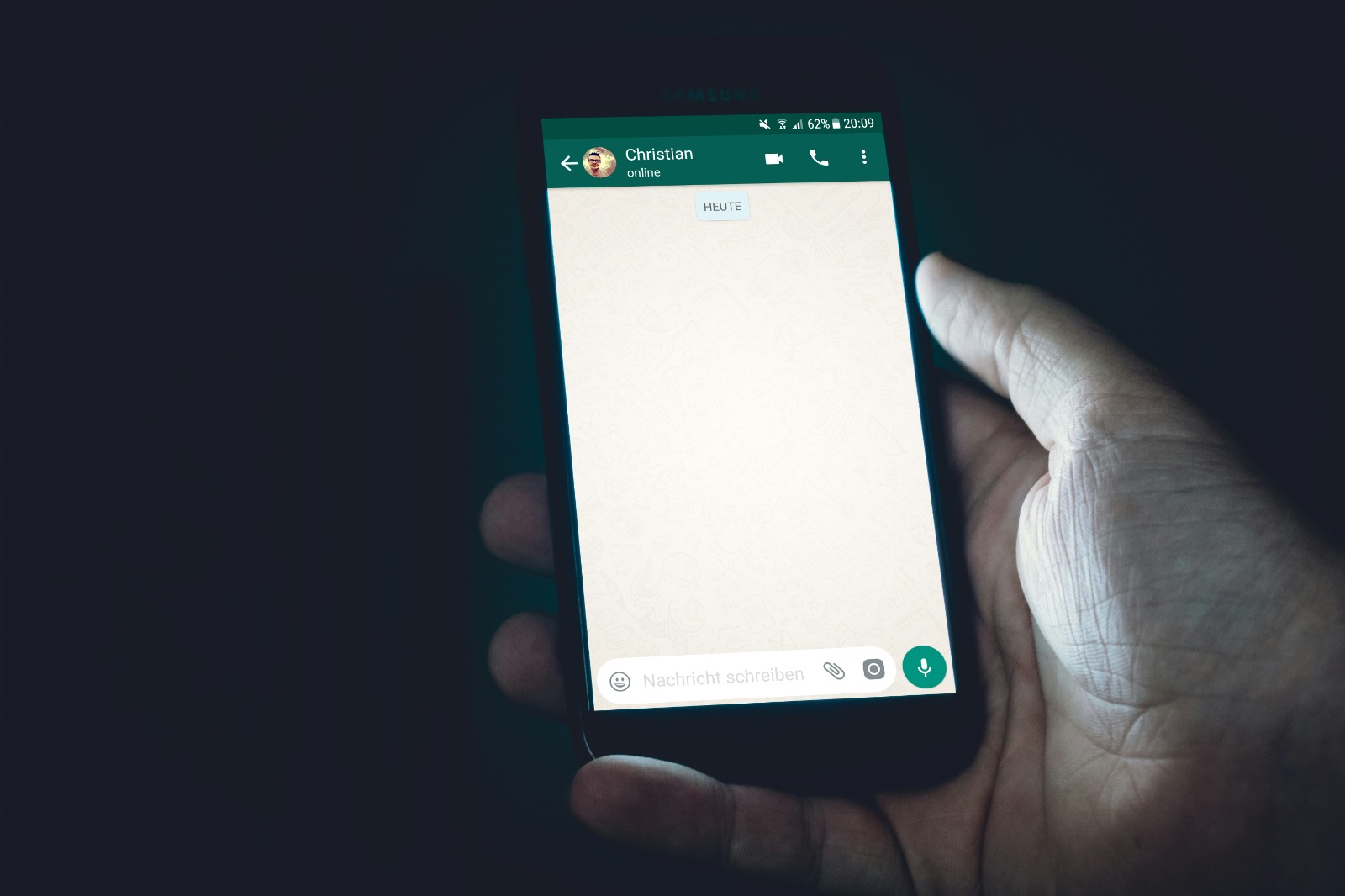
WhatsApp chat display (credit: unsplash)
Setting the privacy of "Last Seen" on WhatsApp is an important step in managing your online presence and protecting your privacy. WhatsApp provides several options that allow users to control who can see their "Last Seen" status. Here is a complete guide on how to set this privacy, along with an explanation of the implications of each option:
1. Opening WhatsApp Settings
The first step is to open the WhatsApp application on your device and access the settings menu. The way to do this is slightly different depending on the type of device you are using:
- For Android devices: Tap the three dots icon in the upper right corner of the screen, then select "Settings".
- For iOS devices: Tap the "Settings" tab at the bottom of the screen.
2. Accessing Privacy Settings
Once you are in the settings menu, the next step is:
- Tap "Account".
- Select "Privacy".
3. Setting "Last Seen"
Within the Privacy menu, you will find the option "Last Seen". Tap this option to see the available choices:
- Everyone: Your “Last Seen” status will be visible to anyone who has your WhatsApp number.
- My contacts: Only contacts saved on your phone can see your “Last Seen” status.
- My contacts except…: Allows you to choose specific contacts who cannot see your “Last Seen” status.
- Nobody: No one can see your “Last Seen” status.
4.Understanding the Implications of Each Choice
Each choice has implications that need to be considered:
- Everyone: Provides maximum transparency but also greater potential oversight.
- My contacts: Balances privacy with accessibility for people you know.
- My contacts except…: Provides more granular control over your privacy.
- Nobody: Provides maximum privacy but also limits your ability to see others' statuses.
5.Considering the Principle of Reciprocity
It is important to remember that WhatsApp applies the principle of reciprocity in privacy settings. This means:
- If you choose not to share your “Last Seen” status, you will also not be able to see others' statuses.
- This setting applies to all contacts and cannot be set individually (except for the “My contacts except…” option).
6.Managing Profile Photo and Info Privacy
In addition to “Last Seen,” there are other privacy settings you should check:
- Profile photo: Controls who can see your profile photo.
- Info: Sets who can see your profile info.
- Status: Determines who can see your status updates.
7.Understanding “Read Receipts” Settings
The “Read Receipts” setting (blue ticks) is also related to “Last Seen” privacy:
- If you disable “Read Receipts,” you will also not be able to see others' receipts.
- This can affect how others interpret your online activity.
8.Managing Privacy in Groups
Keep in mind that “Last Seen” privacy settings do not apply in group chats:
- Group members will always be able to see when you are “online” when you open the group chat.
- Consider this when joining or interacting in WhatsApp groups.
9. Updating Settings Regularly
Online privacy is an ongoing process. It is important to:
- Regularly review and update your privacy settings.
- Adjust settings according to changes in your needs or situation.
10.Understanding Privacy Limitations
Although WhatsApp offers various privacy options, it is important to understand that:
- No system is 100% secure or private.
- Always be cautious with the information you share online.
11.Using Additional Features for Privacy
WhatsApp also offers additional features that can enhance your privacy:
- Two-step verification: Adding an extra layer of security to your account.
- Block contacts: Preventing certain contacts from reaching out or viewing your information.
- Disappearing messages: Setting messages to automatically delete after a certain time.
By understanding and effectively using WhatsApp's privacy settings, you can manage your online presence in a way that aligns with your needs and preferences. Remember that privacy is a balance between accessibility and self-protection. The choices you make should reflect your comfort level in sharing information online while maintaining the connectivity you desire with your contacts.
8. Privacy Trends in the Digital Era
Privacy in the digital age has become an increasingly important and complex topic. With the rapid development of technology, the way we view and manage privacy continues to evolve. Here are some key trends in digital privacy to pay attention to:
1. Increased Privacy Awareness
This trend is marked by a growing public awareness of the importance of digital privacy:
- More users are actively seeking information about how their data is collected and used.
- Increased demand for transparency from technology companies regarding data collection and usage practices.
- The emergence of movements and campaigns promoting digital privacy rights.
2. Stricter Privacy Regulations
Governments around the world are beginning to respond to privacy concerns with stricter regulations:
- Implementation of the General Data Protection Regulation (GDPR) in the European Union as a new standard in data protection.
- The California Consumer Privacy Act (CCPA) in the United States, which gives consumers greater control over their data.
- Increased similar regulations in various countries focused on personal data protection.
3. End-to-End Encryption
The adoption of end-to-end encryption is becoming more widespread as a security standard in digital communication:
- More instant messaging and email applications are implementing end-to-end encryption as a default feature.
- Increased consumer demand for services that offer strong encryption.
- Ongoing debate between user privacy and law enforcement needs.
4. Privacy as a Product Feature
Technology companies are beginning to see privacy as an important feature of their products:
- Increased focus on “Privacy by Design” in the development of new products and services.
- More sophisticated and user-friendly privacy features in applications and devices.
- Using privacy as a key selling point in technology product marketing.
5. Personalization vs Privacy
There is a tug-of-war between the desire for personalized experiences and the need for privacy:
- Users want customized services but are also concerned about how much data is being collected.
- Companies seek a balance between providing personalized experiences and respecting user privacy.
- The emergence of technologies that attempt to provide personalization without compromising privacy.
6.Privacy in the Internet of Things (IoT)
With the proliferation of IoT devices, new challenges in privacy arise:
- Increased concerns about data collection by smart home devices and wearables.
- Challenges in securing data collected by various connected devices.
- The need for stronger privacy standards in the IoT ecosystem.
7.Online Anonymity
There is a growing interest and debate surrounding the right to remain anonymous online:
- Increased use of VPNs and other anonymization tools.
- Debate about the balance between anonymity and accountability in the digital space.
- Challenges in verifying identity while protecting user privacy.
8.Privacy of Biometric Data
With the increasing use of biometric data, new concerns about privacy emerge:
- Ethical questions surrounding the collection and storage of biometric data.
- Concerns about the potential misuse of biometric data.
- The need for stricter regulations regarding the use of facial recognition and other biometric technologies.
9.Digital Privacy Education
There is an increasing focus on education about digital privacy:
- More educational programs incorporating digital literacy and privacy into the curriculum.
- Increased initiatives from tech companies to educate users about privacy features.
- The emergence of online resources and courses focused on privacy and digital security.
10.Privacy in Remote Work
With the rise of remote work trends, new privacy challenges arise:
- Concerns about employee monitoring in remote work environments.
- The need for clear policies on privacy in the use of personal devices for work.
- Challenges in maintaining company data security in distributed work environments.
11.Privacy-Enhancing Technologies (PETs)
Developments in technologies specifically designed to enhance privacy:
- Increased use of federated computing for data analysis without compromising individual privacy.
- Development of advanced cryptographic techniques such as Zero-Knowledge Proofs.
- Adoption of blockchain technology for more secure and decentralized identity management.
These trends indicate that privacy in the digital age is a dynamic and evolving topic. As technology continues to advance, new challenges and solutions regarding privacy will continue to emerge. It is important for individuals, companies, and policymakers to stay up-to-date with these developments and adapt as necessary. Digital privacy is no longer just a security issue; it has become a fundamental aspect of human rights in the digital age.
9. Frequently Asked Questions About WhatsApp's "Last Seen"

Someone is using WhatsApp chat (credit: unsplash)
The “Last Seen” feature on WhatsApp often raises various questions and concerns among users. Here are some frequently asked questions along with their answers:
1. Does someone know if I viewed their “Last Seen” status?
Answer: No, WhatsApp does not provide notifications or information to users about who has viewed their “Last Seen” status. This feature only displays the last time someone accessed the app, not who viewed it.
2. If I turn off “Last Seen”, can I still see other people's statuses?
Answer: No. WhatsApp applies the principle of reciprocity. If you turn off your “Last Seen” feature, you will also not be able to see other people's “Last Seen” statuses. This applies to all contacts, regardless of their privacy settings.
3. Is "Last Seen" always accurate?
Answer: Generally, "Last Seen" is quite accurate in showing when someone last opened the WhatsApp application. However, there are several factors that can affect its accuracy, such as a poor internet connection or the app running in the background.
4. Can I set "Last Seen" for specific contacts only?
Answer: Yes, WhatsApp provides the option "My Contacts Except..." that allows you to select specific contacts who cannot see your "Last Seen" status. However, keep in mind that you also will not be able to see their status.
5. Does turning off "Last Seen" affect other features on WhatsApp?
Answer: Turning off "Last Seen" does not directly affect core WhatsApp features such as sending messages or making calls. However, it may affect some aspects of interaction, such as not being able to see when your messages have been read if the recipient has also turned off this feature.
6. Is there a way to see someone’s “Last Seen” who has turned off this feature?
Answer: Officially, there is no way to see someone’s “Last Seen” who has turned off this feature. Methods or applications claiming to do this are generally unreliable and may violate user privacy as well as WhatsApp's terms of service.
7. Is the “online” status different from “Last Seen”?
Answer: Yes, the “online” status and “Last Seen” are two different things. The “online” status indicates that the user is actively using the WhatsApp application at that moment, while “Last Seen” shows when the user last opened the application.
8. Can I hide my “online” status?
Answer: Currently, WhatsApp does not provide an option to hide the “online” status. When you open and actively use the application, the “online” status will appear, regardless of your “Last Seen” settings.
9. Does “Last Seen” remain visible if I block someone?
Answer: No. When you block someone on WhatsApp, they will not be able to see your "Last Seen" status, profile picture, or your status information. Similarly, you will not be able to see their information.
10. Does the "Last Seen" setting affect WhatsApp groups?
Answer: The "Last Seen" setting does not apply in group chats. Group members will always be able to see when you are "online" when you open the group chat, regardless of your privacy settings.
11. How can you tell if someone has changed their "Last Seen" settings?
Answer: If you cannot see someone's "Last Seen" status, it could mean they have changed their privacy settings, or you have changed your own settings. There is no specific notification given when someone changes these settings.
12. Does "Last Seen" affect the blue ticks (read receipts)?
Answer: The "Last Seen" setting and blue ticks (read receipts) are two separate features. However, if you turn off the blue checkmarks, this will also automatically turn off your “Last Seen.”
13. Can I set a different “Last Seen” for WhatsApp Business?
Answer: The privacy settings for WhatsApp Business are generally the same as regular WhatsApp. You can set “Last Seen” in the same way, but keep in mind that some business features may require certain visibility to function optimally.
14. Does turning off “Last Seen” affect the performance of the WhatsApp application?
Answer: No, turning off “Last Seen” does not affect the performance or main functionality of the WhatsApp application. It only affects the visibility of certain information between you and your contacts.
15. How does “Last Seen” work if I use WhatsApp on multiple devices?
Answer: If you use WhatsApp on multiple devices, “Last Seen” will reflect your last activity on any of those devices. WhatsApp will display the last time you were active on any device connected to your account.
Understanding how the “Last Seen” feature works and its implications can help users make more informed decisions about their privacy settings on WhatsApp. It is important to always consider the balance between privacy and accessibility in your digital communication.
Find other interesting and useful reviews at kapanlagi.com. If not now, when?
(kpl/psp)
Disclaimer: This translation from Bahasa Indonesia to English has been generated by Artificial Intelligence.










